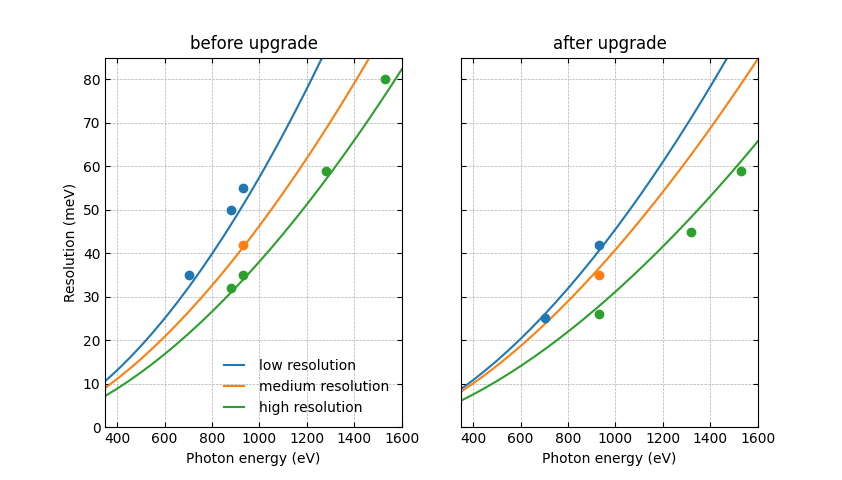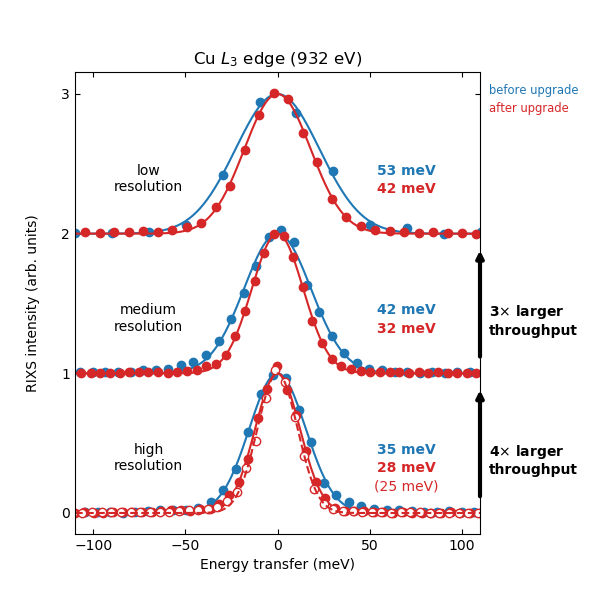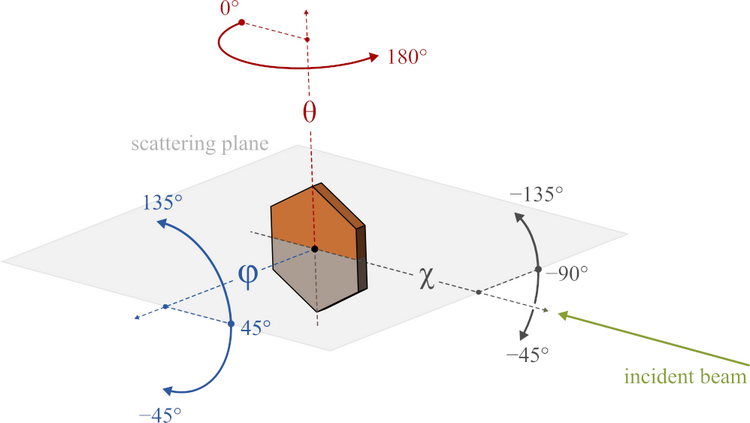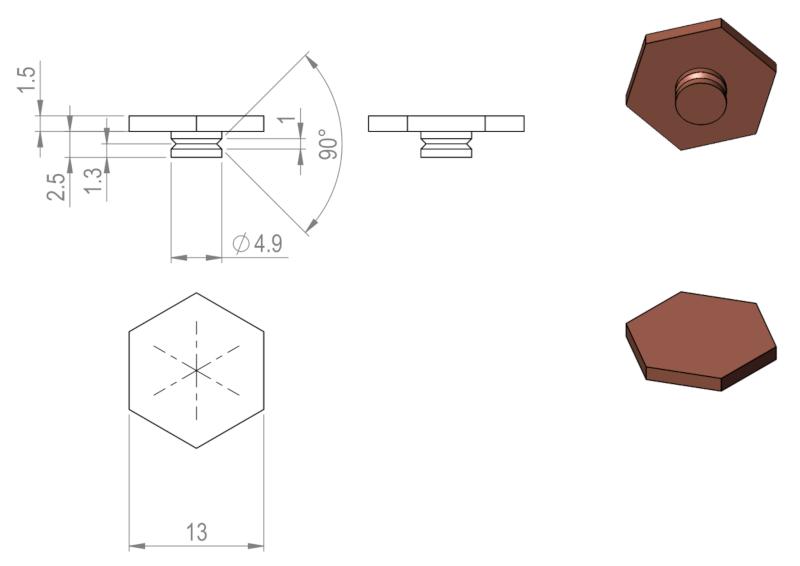RIXS end-station
RIXS Spectrometer
A high resolution soft X-ray RIXS spectrometer reaching a combined resolving power E/ΔE better than 30,000. The spectrometer features an 11m long scattering arm capable of rotating over 100º without breaking vacuum, and a full in-vacuum 4-circle sample goniometer. The instrument was designed and developed in collaboration with Giacomo Ghiringhelli & Lucio Braicovich from Politecnico di Milano.
The spectrometer saw its first user experiments in the summer of 2015 and is acheiving its target figures.
Routinely, < 60mV resolution is achieved at Cu L3 edges, with < 35mV in high resolution mode demonstrated in first commissioning.
A liquid helium flow cryostat can provide temperatures down to 20K at the sample with all degrees of freedom preserved.
The 11m long scattering arm can rotate over 100º, from a scattering angle of 50º through to 150º, without breaking ultra-high vacuum. Samples can also be transferred in vacuum
The entrance slit is focused by the VLS grating (800lines/mm or 1600 lines/mm) onto the exit slit. A cylindrical sagital refocusing mirror and an elliptical bender are used for horizontal and vertical focusing onto the sample position respectively. The beam size for the RIXS branch is 4 x 60 µm2 (FWHM).
The spectrometer underwent an upgrade in 2020 resulting in a significant improvement in through-put/energy resolution.
The spectrometer can be operated with three different combinations of low- and high-density monochromator and spectrometer gratings in order to achieve the best compromomise between total energy resolution and through-put for a given experiment.
|
|
monochromator grating |
spectrometer grating |
through-put w.r.t. |
combined energy resolution |
|---|---|---|---|---|
|
low resolution, |
800 lines/mm |
1400 lines/mm |
x12 |
42 meV |
|
medium resolution, |
800 lines/mm |
2500 lines/mm |
x4 |
32 meV |
|
high resolution, |
1600 lines/mm |
2500 lines/mm |
x1 |
28 meV |
*15 microns exit slit, **10 microns exit slit
The upgrade allows us to achieve much higher energy resolution in each of these three modes of operation. As a consequence, experiments can now be done with much higher through-put at a given energy resolution or with much better energy resolution at the same through-put compared to before the upgrade.

Combined resolution of beamline plus spectrometer as a function of photon energy. The expected resolution calculated from analytic expressions is shown as solid lines, dots mark commissioning results.

Comparison of the energy resolution at the Cu L3 edge before and after the upgrade for the low, medium, and high-resolution setup. Dots show the scattering intensity from an elastic scatter, solid lines a Gaussian fit to the data.
Scattering geometry
Scattering is in the horizontal plane. A full 4-circle in vacuum goniometer is used to manipulate the samples in the beam.

For more information on the goniometer see here.
Sample holders
Sample plates
Samples are fixed on sample plates which are then mounted on custom-made sample holders and transferred in UHV to the goniometer. Our standard sample plates have the shape of 13 mm wide hexagons with a flat top (see image below). Sample plates with other, custom shapes could be used if required by the experiment. This should be discussed with the beamline staff. Detailed drawings of the standard sample plates in pdf format can be found here.

Sample Holder Shuttle
Pictures demonstrate how sample plate inserts (small screws on top left and right diagonals fix the plate in. Orientation of hexagonal plate is freely chosen).
The plates are designed for a sample of 0.5 mm thickness - i.e. the nominal centre of rotation is 0.5 mm above the surface of the hexagonal piece. The goniometer can also move the sample ± 6 mm in this direction, however.
Sample Holder Shuttle Drawings
Below is a set of drawings in case you wish to replicate the shuttle. Note that there are 8 electrical connections possible using the pins shown in the figures, of which 6 can be used by the user.
Data Analysis
Our software for the analysis of ID32 RIXS data is available here:
https://github.com/kkummer/RixsToolBox/releases
For more information please contact the beamline staff




